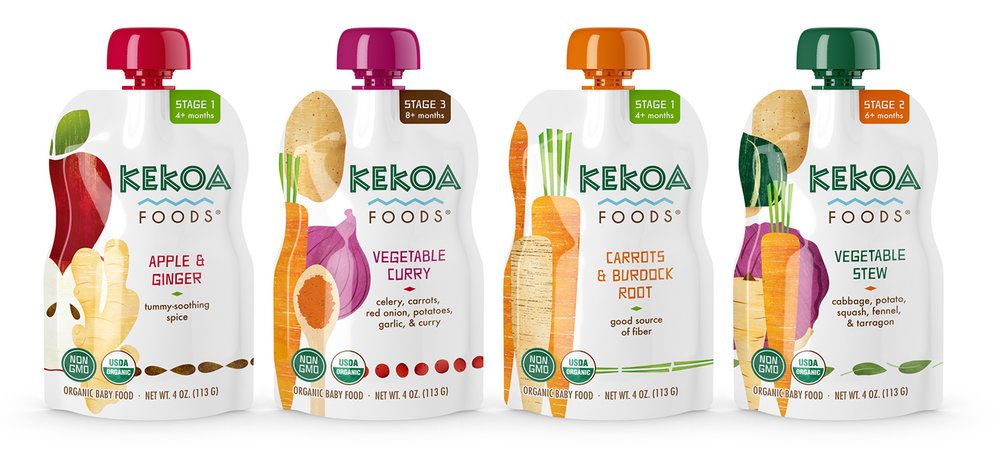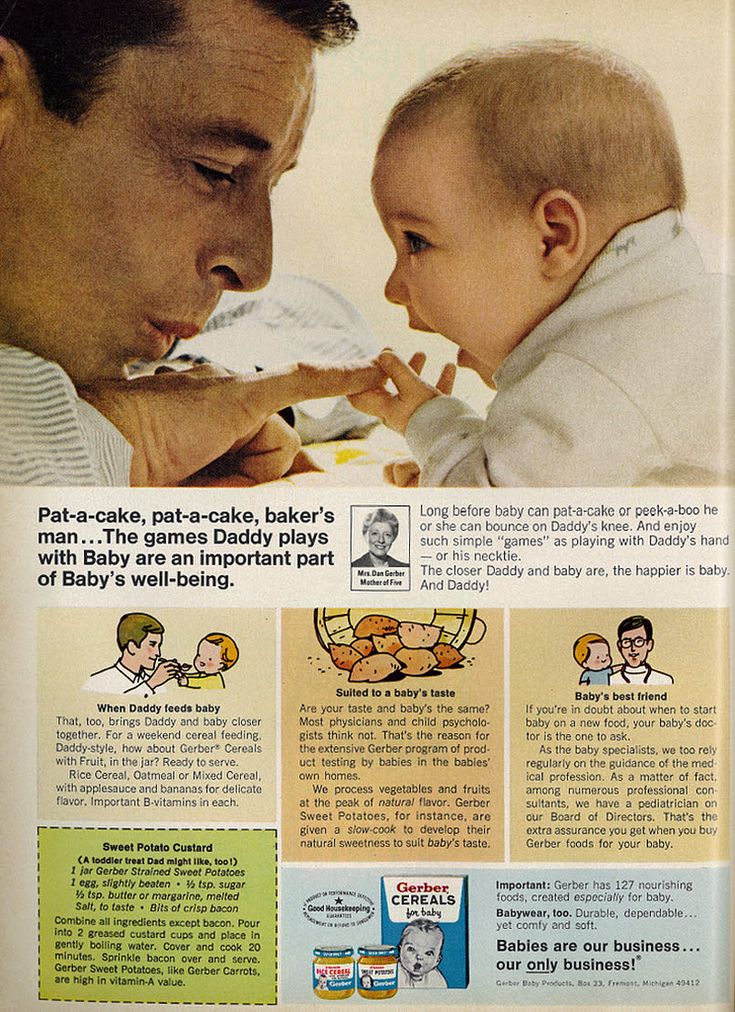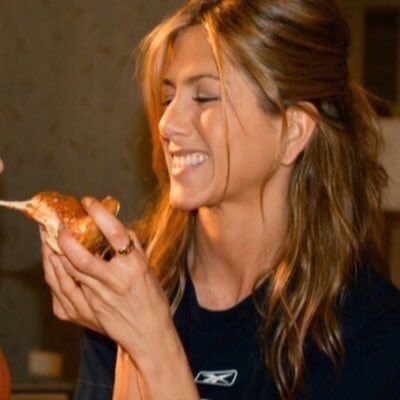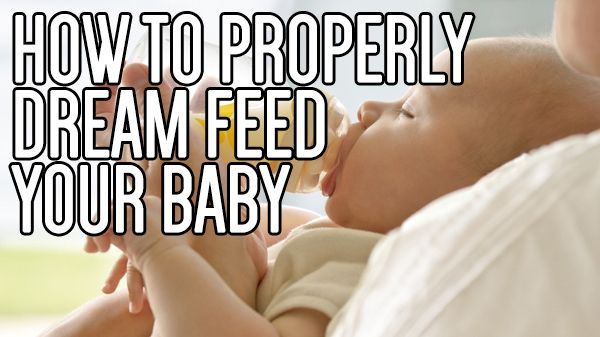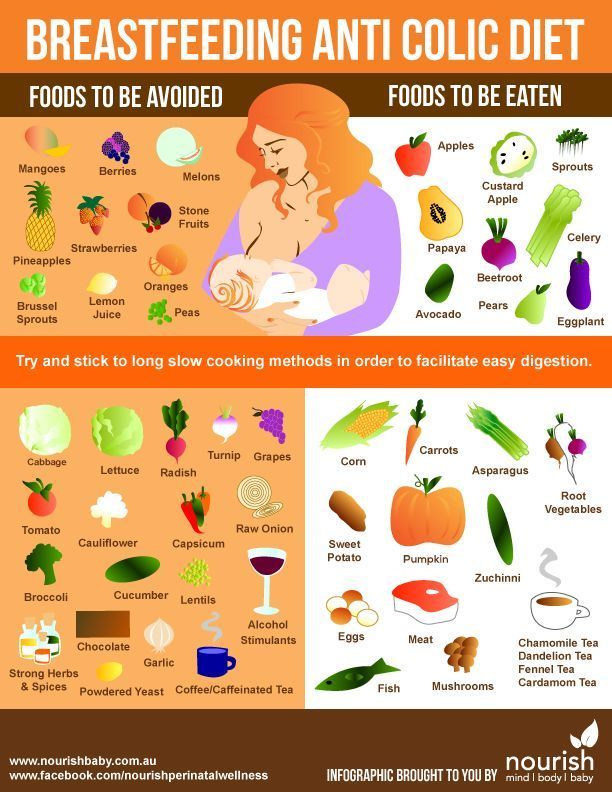Are baby food pouches healthy
Do Baby Food Pouches Cause Eating Problems?
Written by Lisa Marshall
Walk the baby food aisle and you'll quickly notice that those miniature glass jars of baby food from your childhood are being overtaken by squeezable, suck-able, disposable pouches.
A decade after they hit the shelves, billed as a mess-free portable option for on-the-go families, the puree-filled packages now make up more than a quarter of baby food sales in the United States. Nearly a third of 2-year-olds' packed lunches at day care contain at least one pouch, one recent University of Texas Austin study found, and some toddlers are getting more than half of their midday calories in pouch form.
That concerns child health experts who say that while the pouches are fine as an occasional snack, their overuse could potentially breed poor eating habits and stunt development of feeding skills and motor coordination at a critical stage of life.
"Many of us in the medical field have a love-hate relationship with pouches," says Kara Larson, a speech language pathologist and feeding specialist at Boston Children's Hospital. "They're convenient and travel well and are often a better choice than cookies or chips. But parents need to use them in moderation."
For infants and toddlers, Larson says, eating is an important learning experience. Scraping a spoon across a bowl and lifting it to the mouth develops motor coordination. Plucking cut-up bits of banana from a high-chair tray develops grasping skills. And unlike sucking from a pouch -- which requires a front-to-back tongue motion -- chewing soft foods requires a child to develop side-to-side tongue motions needed for eating and speech later in life.
"If children are just sucking from a pouch all the time, we worry that some of that tactile experience with food might be lost," she says.
Parents often like pouches for their wide variety of seemingly healthy flavors, ranging from quinoa and kale mixtures to organic vegetable blends. But experts warn that the actual taste of those vegetables and grains is often masked with sugar, which could pose dental problems and breed picky eaters.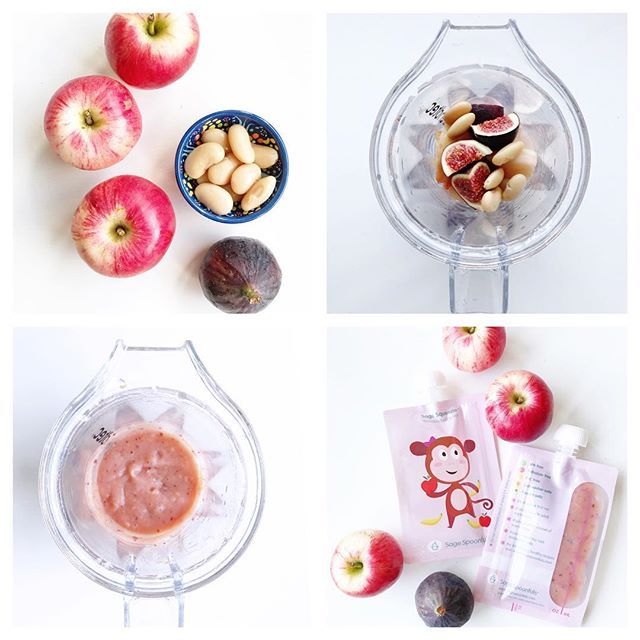
"Children at this age are developing taste preferences that will follow them throughout life," says Courtney Byrd-Williams, PhD, a behavioral scientist at UTHealth School of Public Health in Austin, TX. "If they are used to eating overly sweet fruit or aren't exposed to plain vegetables, they are less likely to like them as adults."
She also worries that because pouches are far easier to suck down quickly, they might encourage children to keep eating, even when they're already full -- a bad habit that could cause problems in adulthood.
All that said, Larson and Byrd-Williams see no harm in offering babies 6 months or older and toddlers an occasional pouch -- in the grocery store, in the car, at big brother's soccer game -- when sitting down for a snack isn't practical. Just don't exceed one or two pouches per day, look for low-sugar/high-fiber options, and don't let convenience trump health.
"When we consider what convenience food has done to adult health, there are plenty of reasons to pause before passing your child another pouch," Byrd-Williams says.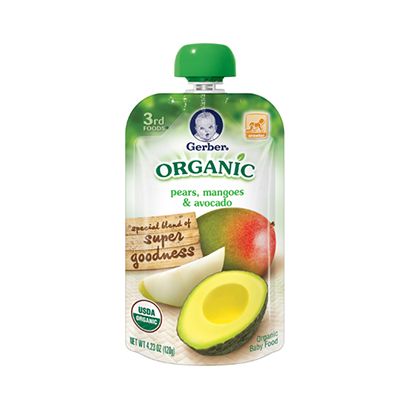
28%: Percentage of day-care lunches for children 6 months to 3 years old that contain at least one pouch; 10% contain two or more pouches. In 4%, half of lunchtime calories came from pouches.
0: Number of packed-lunch pouches that contained purely vegetables.
12 grams: Average amount of sugar in a single pouch.
25%: Percentage of the total baby food market made up of pouches in 2018, according to Nielsen Total Food View.
Baby Food Pouches: Pros, Cons and Advice
Should you give your child a baby food pouch?
It hasn’t taken long for baby food pouches to show up in grocery stores and superstores everywhere. You can even find them at some Starbucks!
In fact, it’s safe to say they’ve become part of the nutrition mainstream for babies and toddlers.
Baby food pouches may provide a good source of fruits and/or veggies, with many brands boasting no added sugars, juices, salt or artificial colors and use of all organic ingredients.
Some companies claim their products are cooked at lower temperatures than jarred baby food, increasing their nutrient content.
While the possibilities are endless with these convenient creations, others advise caution when using them.
In this article, you’ll learn:
- The pros and cons of using baby food pouches
- Why it’s important to connect through feeding
- 5 pointers for effective use of food pouches
Pouches are easily portable and re-sealable for handy feeding at home or on the go. They don’t get crushed like some whole fruits and vegetables or break like glass jars.
Storage is a snap; you can refrigerate or freeze any partially used containers. They can be eaten cold, at room temperature, or heated up in warm water.
They make fruits and vegetables more accessible to toddlers when fresh options are not available or when time is limited.
It’s easy to complement your own cooked meals or restaurant fare with these blends to boost your child’s fruit and vegetable content.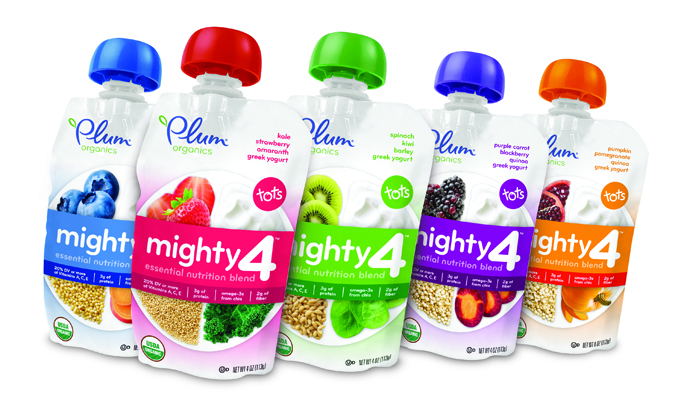
Even though I think they are a wonderful option overall, I do have a few concerns about how these products are used.
Like all baby food, the single-ingredient fruits or fruit and vegetable blends should be introduced around 6 months, when your baby shows developmental signs of readiness.
For infants, spoon feeding utilizes mouth muscles necessary for proper speech. Additionally, toddlers can learn how to use a spoon to build fine motor skills.
I recommend using a spoon when feeding these purees.
It is ok for toddlers to “suck” on these pouches occasionally.
However, make sure your tot has started spoon-feeding themselves, eating finger foods, and drinking from a cup with minimal spilling before giving them a pouch to “suck on.”
Don’t depend on pouches as a sole source of your child’s fruits and veggies, you want him or her to recognize and accept whole fruits and vegetables, too!
Get the Food & Nutrients for Baby’s Brain!
Keep Your Baby’s Nutrition in MindAs baby food pouches become more popular, however, parents want to make sure they fit them into the overall goals for their child’s nutritional needs and developmental progress.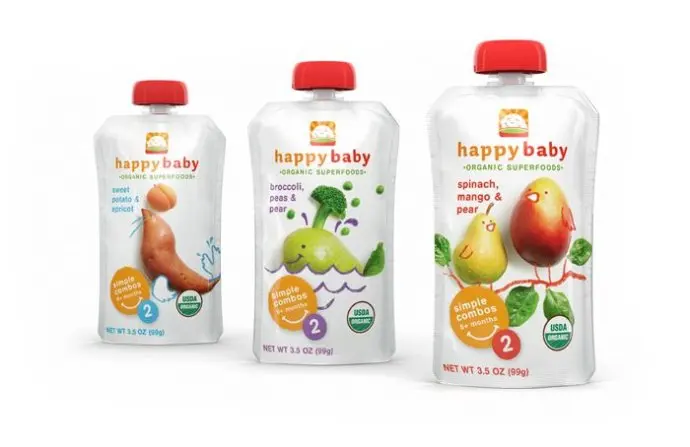
Starting solids is a very important phase and there are a few overarching goals to keep in mind:
- Support your baby’s growth and development by supplying the nutrition he needs, especially for critical nutrients like iron, DHA and vitamin D.
- Advance your little one along with feeding skills. By a year of age, your baby should be self-feeding with utensils (and his hands), drinking out of a cup and eating a wide variety of flavors and textures.
- Setting up healthy eating habits.
With the fast-paced world we live in, it’s easy to put feeding on the back burner and give your youngster foods they can eat without your help.
Remember, feeding is a chance to connect and enhance attachment. When your child eats in the back seat while you drive, you miss out on an opportunity to connect.
A positive feeding relationship in infancy sets the stage for future healthy eating in toddlerhood, childhood and the teen years.
I’ve got a few pointers for using baby food pouches so your baby becomes the healthy, self-feeder he was meant to be!
1. Incorporate the SpoonThe original intent when baby food pouches came out on the market was to use them with a spoon.
Parents could squeeze a bit of baby food onto the spoon and feed it to their infant.
Today, the spoon is skipped and sucking from the pouch is the norm. This misses the opportunity to teach baby how to eat off a spoon and use his mouth muscles to manage, propel and chew food.
All babies need diversified texture so they learn to chew, self-feed and advance their feeding skills.
Babies who do not advance to more textured food by 9 months of age have been shown to have a greater likelihood of having feeding problems later.
Using a pouch won’t hurt your baby if you keep moving forward with feeding skills, such as introducing finger foods, offering the spoon, and encouraging self-feeding..jpg)
Add textured foods such as chopped and cooked veggies, rice, noodles or shredded meats in a bowl with baby food from pouches to increase the texture experience.
These varied textures will stimulate your baby’s sensory system and train his mouth muscles to handle a wide range of food textures.
3. Monitor Baby when Eating a Baby Food PouchNo matter what, when, or how you feed your baby, he or she needs to be monitored to watch for choking and to continue to enhance the parent-child connection and bond.
4. Start Finger Foods Between Six and Eight MonthsBetween six and eight months, babies develop their hand grasp and can hold a finger-shaped, or long, thin rectangle of soft food, such as buttered toast, soft cooked vegetables like sweet potato, or ripe fruit like banana or avocado.
By eight months, the pincer grasp emerges, and your baby can pick up small bits of food with his thumb and forefinger.
At this stage, introduce finer foods like strips and small cubes of soft food to your baby’s meal routine.
Use this opportunity to introduce singular veggies and fruits so your baby can appreciate the flavor and texture of these foods.
5. Always Sit to EatThis is good advice for any child at any age (even adults), but especially for the new eater who is learning to handle food.
Sitting for meals and snacks helps children pay attention to their food and eating, learn to eat mindfully, and stop eating when full.
Your job is to provide quality nutrition and establish a good eating environment. Use developmentally appropriate feeding utensils and food textures to foster lifelong eating habits.
Need More Help with Feeding Baby?Check out our nutrition booklets, workshops, and courses and my book, The Smart Mom’s Guide to Starting Solids.
You may also enjoy reading:
- Is Rice Cereal for Babies Safe?
- Toxins in Baby Food: What You Need to Know
This article was updated on January 26, 2020.
Freezing Homemade Baby Food - Encyclopedia Baby Food
Levchuk Viktoria©
There are some important guidelines for freezing baby food to follow, they are outlined on this page, and there is even a diagram of the foods that can be frozen. We will show you how to freeze freshly made puree and store it. It will be interesting to read.
Good to know!
- The remains of frozen baby food - what to do with them, we will find out in the article. nine0016
- Heading Frozen food - all about baby food cubes.
- New thinking on allergens
Easy to use sitemap Encyclopedia Baby Food with a list of all articles and recipes.
How long do you keep baby food in the refrigerator or freezer?
Contents:
- Freezer: 4-6 months (ideally used within 1 month or 3 months)
- Refrigerator (fruits/vegetables): 24 hours
- Refrigerator (meat, poultry, fish eggs): 24 hours
For optimal quality and nutrient retention, store frozen baby food cubes in the freezer for no more than 1-3 months .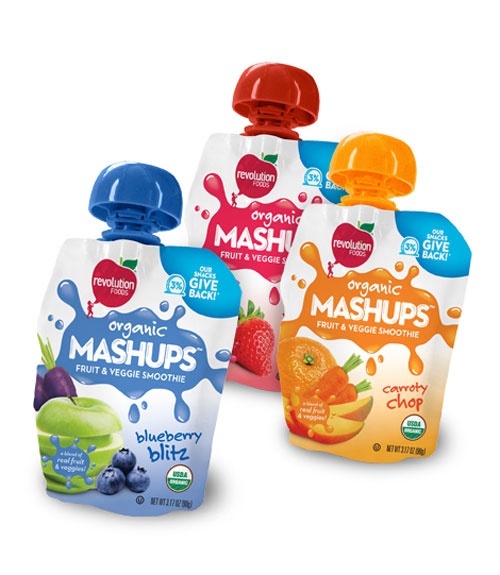
Frozen baby food is safe to use if kept in the freezer for about 3-6 months without thawing again. However, it is more reasonable to use them in the region of 1 month to 3 months inclusive. Due to the amount of water crystals that accumulate in baby puree, and the fact that nutrients and important substances can be leached/evaporated when thawed due to these same water crystals, it is wiser to use your frozen baby food whenever possible. - no more than 3 months of storage. However, it is best to use within the first month after freezing, we advise. nine0005
Most sources advise storing fruit and vegetables for 8 to 12 months in the freezer. This is mostly true of whole foods that are congealed in their natural state. This is also provided that the refrigerator compartment remains at a constant temperature below zero. Deep-freezing is best if you want to keep frozen food for a long time. However, it should be remembered that the instructions and recommendations for freezing food for long-term storage do not imply that the fruit or vegetable has been boiled and mashed.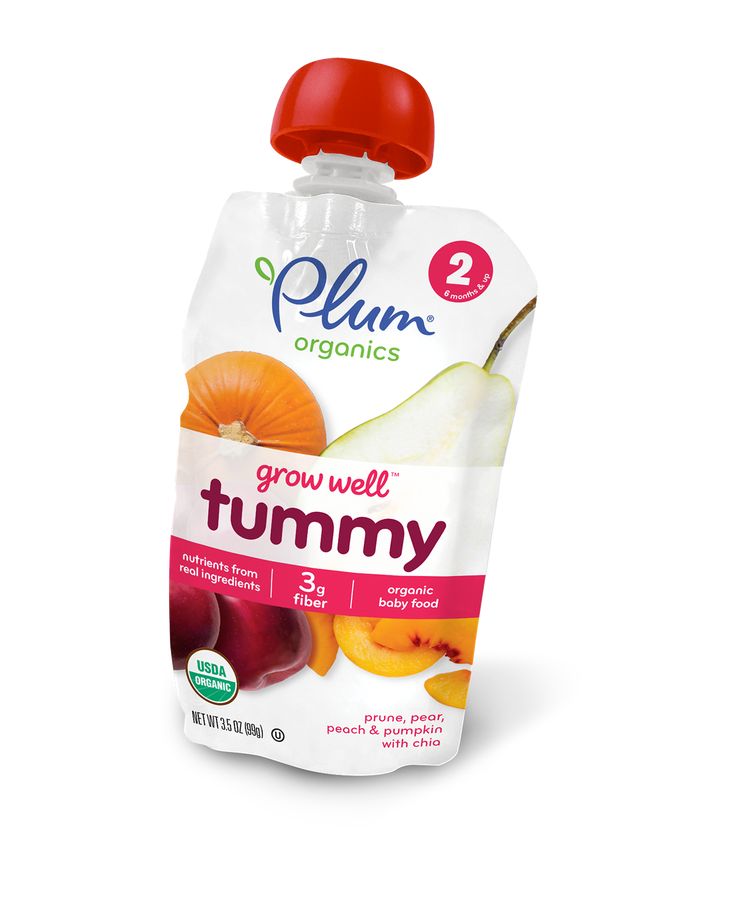 nine0005
nine0005
How long can baby puree be kept in the refrigerator?
In the refrigerator, it is not recommended to store fresh pureed homemade baby food for more than 24 hours. This limitation ensures that the growth of pathogens in the puree is kept to a minimum and that the food does not take on the “refrigerator flavor”. This "rule" applies to vegetables, fruits, meats, etc.
If you do not plan to freeze homemade baby food, then baby food for the baby is prepared every day if he is too small until 8-9months, or every other day, older than the specified age.
Why freeze baby food?
Save parent time, reduce food waste and ensure food safety.
For example, one potato was baked in the oven, and then half was mashed and the other half was frozen.
Frozen vegetables or fruits are safe in baby food
Fruits and vegetables can be frozen. Using frozen fruits and vegetables is the second best option after eating fresh. The quick freezing process (food is frozen at a very low temperature and very quickly) actually preserves the nutrients optimally. Cooking destroys more important nutrients than freezing food. Contrary to myth, freezing food (particularly fruits and vegetables) does not destroy 100% of minerals and vitamins. The freezing process, subject to storage conditions at a constant temperature of zero degrees, does not contribute to the complete loss of nutrients and important substances - if this is the case, then most of the population is malnourished, since in winter we eat a huge amount of frozen foods. nine0005
The quick freezing process (food is frozen at a very low temperature and very quickly) actually preserves the nutrients optimally. Cooking destroys more important nutrients than freezing food. Contrary to myth, freezing food (particularly fruits and vegetables) does not destroy 100% of minerals and vitamins. The freezing process, subject to storage conditions at a constant temperature of zero degrees, does not contribute to the complete loss of nutrients and important substances - if this is the case, then most of the population is malnourished, since in winter we eat a huge amount of frozen foods. nine0005
Frozen vegetables not cooked at the time of packaging must be cooked before eating. Please remember to read the labels of frozen bags, as some brands of frozen vegetables may be pre-cooked.
One of the most frequently asked questions is "Can I use frozen fruits or vegetables for baby food and then freeze the puree?". Since there are no studies that show that repeated freezing is negative and / or can negatively affect health. The problem is that it is necessary to cook food from products that have been frozen once. But the reality is that a frozen product, going through all the stages from a fresh look to a frozen product in a refrigerator in a store, can survive several defrosting and freezing, as it was written earlier, it is through water crystals that nutrients leave. Therefore, purchased frozen vegetables and fruits must be carefully selected, and we would not recommend preparing baby food from them for subsequent freezing of baby puree. It is clear that sometimes parents have no choice and have to start complementary foods with purchased frozen food, so we carefully choose the packaging and the manufacturer, without holes, without pieces of ice. nine0005
The problem is that it is necessary to cook food from products that have been frozen once. But the reality is that a frozen product, going through all the stages from a fresh look to a frozen product in a refrigerator in a store, can survive several defrosting and freezing, as it was written earlier, it is through water crystals that nutrients leave. Therefore, purchased frozen vegetables and fruits must be carefully selected, and we would not recommend preparing baby food from them for subsequent freezing of baby puree. It is clear that sometimes parents have no choice and have to start complementary foods with purchased frozen food, so we carefully choose the packaging and the manufacturer, without holes, without pieces of ice. nine0005
For example, from frozen vegetables (home-made or a good quality store-bought bag) that were raw when frozen, we cook a roast, we freeze the leftovers of the roast and use it for its intended purpose next time, but it is not worth freezing the roast after the last defrosting.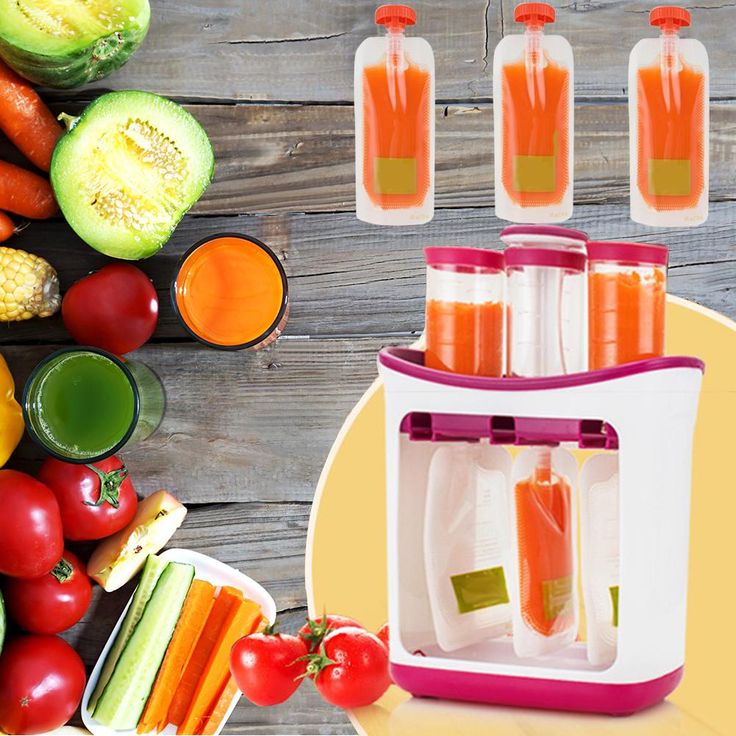
Why not refreeze
Do not refreeze thawed food, this is a correct statement. Re-freezing a defrosted product can affect the quality and taste (and possibly nutritional value) of the product, and when it is thawed, pathogenic bacteria may begin to multiply. It is always necessary to prepare defrosted food before re-freezing. The preparation of a thawed product then allows it to be re-frozen in a single cycle. Storing a bag of frozen fruits or vegetables makes food preparation a quick and easy solution. You do not need to defrost the whole package, just get the required amount of the product, and leave the rest in the freezer. nine0005
The easiest way to freeze baby puree is to spoon it into an ice mold, cover with plastic wrap so that there is no air access.
Before using the ice molds, they must be thoroughly cleaned with soap and boiled water. Some parents even immerse their ice molds in boiling water for sanitization (Note: Make sure the sanitization is suitable for the molds before use. )
)
There are many benefits to storing your child's homemade food in an ice mold:
- Each cube is approximately the same size, which allows parents to determine the amount of food the child consumes.
- Minimal waste by using only 1 cube at a time and not having to waste a lot of food.
- Another advantage is that the ice molds are close at hand and you don't have to go out and buy them.
- The time spent in the kitchen is significantly reduced.
You can transfer baby puree cubes to freezer bags, freeing up molds for the next batch of food and also freeing up some freezer space. nine0005
Do not forget about the labeling of packages with cubes of baby puree, write the date of freezing and the type of puree. This will help you quickly remove the cube from the package, as well as monitor their expiration date.
Ice crystals on baby food cubes
Don't worry if ice crystals are visible on baby food cubes. It's not frostbite, but excess liquid used in mashing that rises and solidifies at the top of the cubes. These crystals or frost are not dangerous and will not make baby puree cubes inedible or harmful. nine0005
It's not frostbite, but excess liquid used in mashing that rises and solidifies at the top of the cubes. These crystals or frost are not dangerous and will not make baby puree cubes inedible or harmful. nine0005
Frostbite - what is it and how to determine it?
Frostbite looks like greyish brown spots on frozen food. It looks like a leathery type of texture and is easily noticeable. Crystals on frozen foods are not frostbite, but are the result of excess liquid during the freezing process and the formation of ice crystals.
Frostbite does not make frozen foods bad or harmful; it just makes the affected areas very dry. The only thing that can suffer in food that is frostbitten is the quality. You can cut off frostbitten areas and use the undamaged area of food. Frostbite is the result of excess air in a frozen bag that sinks onto food. Eliminate air pockets in bags to help stop frostbite. nine0005
Can glass baby food freezer jars or baby food jars like Frutonyanya or Gerber be used? and also such banks are prone to rupture.
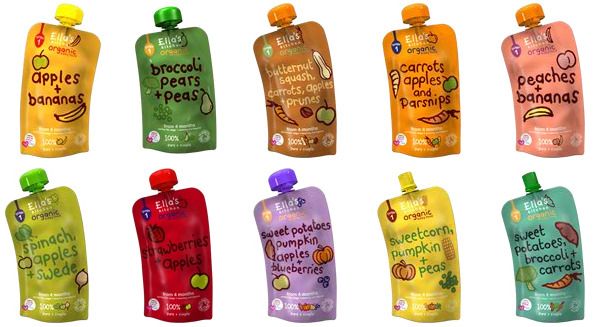 Baby food jars are not manufactured for freezing or extreme heating. There are glass jars for freezing food in them, but they can be hard to find. Many people freeze in baby food jars, but I'm not a fan of this at all. After all, food is made for the baby because we want to give him the best healthy food; Do you really want to take the risk and freeze baby food in glass jars? nine0005
Baby food jars are not manufactured for freezing or extreme heating. There are glass jars for freezing food in them, but they can be hard to find. Many people freeze in baby food jars, but I'm not a fan of this at all. After all, food is made for the baby because we want to give him the best healthy food; Do you really want to take the risk and freeze baby food in glass jars? nine0005 There are certain plastic jars that are specially made to withstand high temperatures and/or freezing. Therefore, it is best to use plastic containers or ordinary thick plastic bags, convenient and simple. There are also special freezer bags with a zip clip - an interesting option.
Can previously frozen breast milk or formula be used to make vegetable or fruit purees?
Do not use previously frozen breast milk to prepare puree to freeze later this baby food.
Breast milk must never be refrozen in any shape or form.
Milk formula
You can freeze puree to which thawed milk formula has been added. However, formula should not be frozen in bottles or cans. It is impossible to add the mixture to the previously frozen mixture and freeze it. If frozen milk formula is used for mashing, then it is necessary to freeze it at a time without defrosting. Freezing milk formula causes separation of fats and liquids, and the texture suffers accordingly. Although there is no health risk, the same happens with breast milk and cow's milk, the texture and quality suffer a little. However, it is best to prepare the milk formula before putting it in the baby puree and only then freeze the puree. This will be more useful and efficient. nine0005
However, formula should not be frozen in bottles or cans. It is impossible to add the mixture to the previously frozen mixture and freeze it. If frozen milk formula is used for mashing, then it is necessary to freeze it at a time without defrosting. Freezing milk formula causes separation of fats and liquids, and the texture suffers accordingly. Although there is no health risk, the same happens with breast milk and cow's milk, the texture and quality suffer a little. However, it is best to prepare the milk formula before putting it in the baby puree and only then freeze the puree. This will be more useful and efficient. nine0005
Some formula manufacturers say that freezing any formula is not recommended, as the process can alter physical properties such as fat separation, which can be difficult for sensitive babies to digest. Freezing does not affect the quality or food sterility, however it will not prolong the shelf life of formula. Freezing may result in loss of desired appearance and functionality and is therefore not recommended. nine0003
nine0003
It may be easier to freeze puree without adding any additional liquids. Since, when defrosted, they are most often liquid, so you have to add oatmeal or rice flakes.
8 Ways to Use Cans and Bags Creatively | Hill's
Looking for ways to make use of the cat and dog food bag that takes up so much space in your bin and landfill? Here are some ideas - both purely decorative and practical - for reusing pet food bags and jars. nine0005
Bag craft ideas
-
Food mat: Get rid of floor clutter by making a food bag rug for your four-legged friend. Simply cut a circle, rectangle or square out of it, then attach it to a non-slip base with vinyl cladding. You now have a mat that will keep food particles from falling to the floor and is easy to clean.
-
Bag: a food bag converted into a large bag, perfect for going to the grocery store. All you need is a sewing machine, thread and scissors.
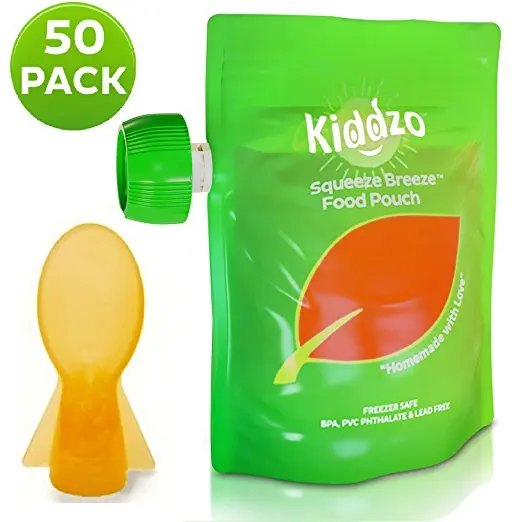 Cut the bag to the correct height. Fold the edges over to make them neat and sew in a zigzag stitch. Make handles by cutting two strips about 7-8 centimeters wide each. Fold them in half and sew to the bag. Ready! nine0005
Cut the bag to the correct height. Fold the edges over to make them neat and sew in a zigzag stitch. Make handles by cutting two strips about 7-8 centimeters wide each. Fold them in half and sew to the bag. Ready! nine0005 -
Garden Chair Updated: Your favorite old metal garden chairs can end up in the back corner of your garage with a torn or sagging net. Make them look like they used to by updating the mesh with food bags. Cut strips the same width and length as the old ones and simply sew them to the chair.
-
Bibs: Plastic food bags make the perfect baby bibs that are easy to clean. Lay the bib on top of the food bag and cut out the same bib to fit. For the lining, cut a similar piece of fleece about 3 inches wider. This will be needed to decorate the edge. Wrap the fleece around the bag and sew on. Cut out the neckline from the fleece and add Velcro or buttons. Now your little animal lover will become the proud owner of a unique bib! nine0005
- Frostbite protection: If you plan to freeze food in the freezer, place the wrapped food in a clean, empty food bag.
 This will add an extra layer of protection against frostbite. Just make sure you wash the bag thoroughly first.
This will add an extra layer of protection against frostbite. Just make sure you wash the bag thoroughly first.
Can Crafts
-
Decorations: DIY blogs provide information on how to make cute decorations and DIY tin can crafts. Children can use their imagination to create all sorts of decorations, such as snowmen in winter, pumpkins for Halloween, or vases for spring flowers. nine0005
-
Containers: Paint a clean food tin to turn it into a beautiful and useful container. Cat food tins fit perfectly in a desk drawer where you can hold paperclips, pins or loose change. You can use them in your bathroom cabinet to store hairpins, hairpins and hair ties.
- Wind Chimes: This will be a cute project for kids to make an interesting gift for their grandparents and other relatives. All you need to make jar bells is the jar itself, string and nuts. Video blogs have easy-to-follow instructions on how to make wind chimes and other can crafts with your kids.
